
Legends and myths have always intrigued me. Through these, various fascinating stories have come down the ages with different interpretations and versions. One such legend has now been created into an amazing animated short film titled Kapaemahu.
Co-created by director-producers Hinaleimoana Wong-Kalu, Dean Hamer and Joe Wilson, Kapaemahu reveals the healing power of four mysterious stones on Waikiki Beach – and the legendary transgender spirits within them. The animated short has been officially selected for BISFF (Bengaluru International Short Film Festival), a qualifier for the Oscars.
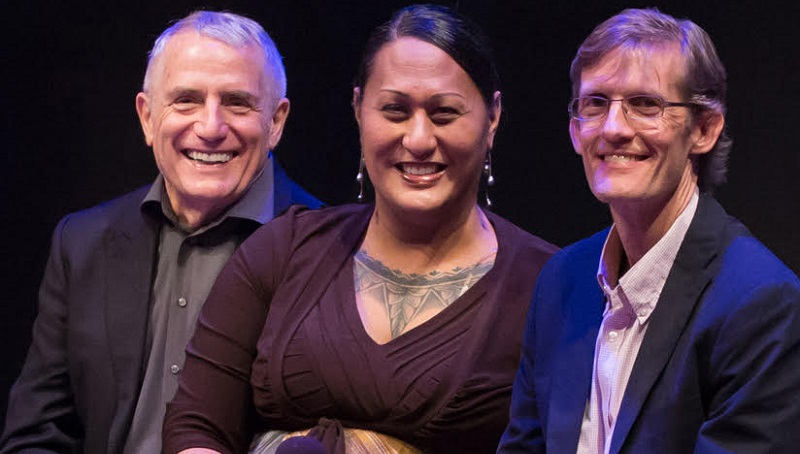
Commenting on the selection, Wong-Kalu told AnimationXpress, “To be included in the BISFF is an extraordinary honour, because firstly, it was created in the spirit of bringing new voices and new stories into the media-making industry. Secondly, because of India’s similar history with third gender identities, who were embraced and deified in mythology, demonised by British colonists, revered by many as demigoddesses and reviled by others as deviant victims, but are now, themselves, reclaiming their lost position in society through spirituality. We have much in common across the distances of time and culture and we hope BISFF audiences feel the same.”
The official synopsis of Kapaemahu reads: Long ago, four extraordinary individuals of dual male and female spirit brought the healing arts from Tahiti to Hawaii. The name of their leader was Kapaemahu. Beloved by the people for their gentle ways and miraculous cures, they imbued four giant boulders with their powers. The stones still stand on what is now Waikiki Beach, but the true story behind them has been hidden – until now.

Wong-Kalu was inspired to make Kapaemahu by a quote articulated in 1865 by Hawaiian historian S. M. Kamakau : “He makemake ko’u e pololei ka moolelo o ko’u one hanau, aole na ka malihimi e ao ia’u I ka moolelo o ko’u lahui, na’u e ao aku I ka moolelo I ka malihini” which translates to – “I want the history of my homeland to be correct. The foreigner shall not teach me the history of my people, I will teach the foreigner.”
“As a Kanaka – a native person in an island nation that was illegally overthrown and continues to be occupied by a foreign power – I believe that our survival as indigenous people depends on our ability to know and practice our cultural traditions, to speak and understand our language, and to feel an authentic connection to our own history. That’s why I decided to write Kapaemahu and narrate it in Olelo Niihau, the only form of Hawaiian that has been continuously spoken since before the arrival of foreigners. It is not enough to study Hawaiian in an American classroom, nor to read about our history in an English language textbook. We need to be active participants in understanding and telling our stories, and we need to have both the ancestral storytelling knowledge and the modern media tools to do so effectively and authentically,” noted she on the conceptualising the film.

Wong-Kalu is a ‘mahu’ (queer) herself, and like many indigenous third-gender identities was once respected but is now more often a target for persecution and exclusion due to the lingering effects of colonisation and Christianisation. While international awareness of gender fluidity has greatly increased of late, it has not always led to greater acceptance. Her experience as the protagonist of two documentary films, Kumu Hina and A Place in the Middle – directed by her Kapaemahu collaborators Hamer and Wilson, convinced her that portraying gender non-conforming people as strong, talented, and worthwhile individuals can make a real difference.
“The team’s research on the animated film started five years ago. The original story was truly hidden. It took five years of research, two years of script writing and storyboarding, one year of planning with Daniel Sousa (animation director) followed by seven months of animating. The version seen in the final film is close to the story as it first emerged,” noted Wong-Kalu.
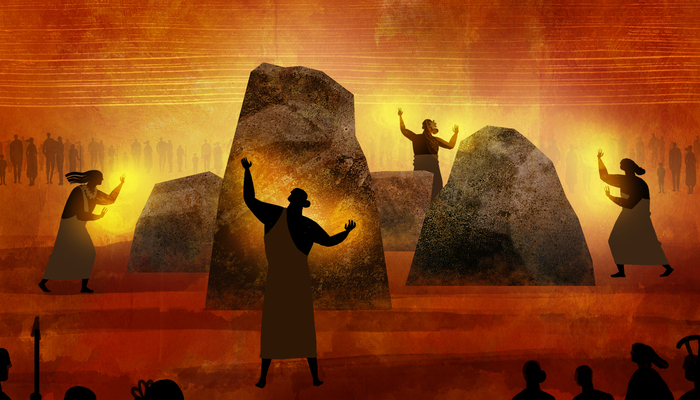
As a Kanaka Maoli storyteller, the director felt that animation was the ideal medium to convey the mythical themes and characters of Kapaemahu. It is also the most culturally sensitive way to depict spiritual and abstract aspects of the tradition such as the presence of mana in the stones and the mixture of male and female spirits in mahu. So, for her the first step was to find an animator whose previous work and visual style inspired us and aligned with the aesthetic we had in our minds for bringing this story to life.
She found a perfect match in Daniel Sousa, whose earlier film Feral demonstrated a unique artistic, almost timeless, style and was nominated for an Academy Award. “He brought brilliant storytelling ideas to the collaboration, including telling the story through the perspective of a young person’s eyes. The characteristics of the four protagonists are as true to the original legend as possible. The opening scene, with the mahu healers on the boat crossing a vast ocean alludes to Polynesians’ history as great voyagers deeply connected to one another among all the islands of the Pacific. And the moana – the ocean and its waters – is a symbol of life and the power and energy that sustains us,” informed she.
Apart from the three director-producers and Sousa, the Kapaemahu team is a diverse one. Sousa also storyboard and animation, Dan Golden looked after sound design and score; and Kaumakaiwa Kanakaole ideated and executed chant composition and performance of the four protagonists. The film was a co-production with Pacific Islanders in Communications, which supports work by and about Pacific Islanders.
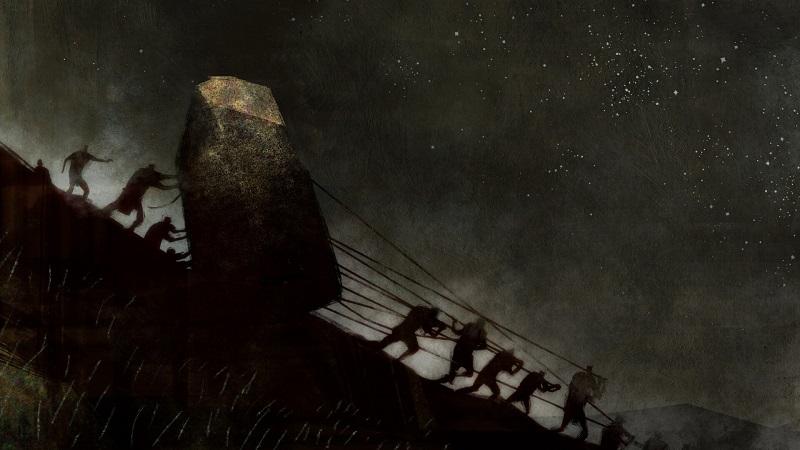
Kapaemahu uses 2D animation drawn on paper. The software used by the makers are Adobe Animate, Photoshop, After Effects and Blender.
“Sousa developed a textured, hand-painted style for the animation that is deeply rooted in Polynesian visual culture, with designs and palette informed by the traditional art forms of tapa and lauhala weaving. In contrast to the caricatures of Polynesians typical of Disney animations, the characters in our work are presented as stately and dignified individuals. The emphasis was on telling the story clearly and beautifully,” stated Wong-Kalu.
Kapaemahu has received many official selections and awards at many prestigious film festivals and premiered at the Tribeca Film Festival where it won Special Jury Mention. It also received the Grand Jury Prize in Spain’s Animayo Film Festival, qualifying it for an Academy Award nomination. It’s an official selection at a wide range of international, animation, indigenous, LGBT and children’s film festivals including Annecy, Hiroshima (only one out of 200 USA films submitted), Huesca, Palm Springs Short Fest, Frameline, Galway, Indy Shorts, Atlanta, Zlin Children’s, Woods Hole, Melbourne International and New Zealand International.
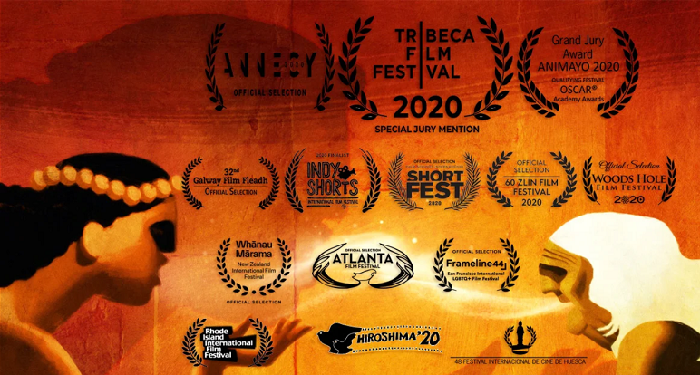
Kapaemahu takes one on a surreal journey, celebrates the power of the androgynous minds which are now being suppressed. The film looks like poetry in motion, and the chant/transferring of powers by the four ‘mahus’ into the stones, creates a meditative effect. The animation technique is unique and evokes a feeling of witnessing the legend and its history in person.
“We hope that the film provokes viewers to see Hawaii from a Kanaka, or native person’s, perspective, and to ask questions and pursue information and answers that are central to indigenous peoples, gender and sexual minorities, and marginalized people’s experiences the world over.
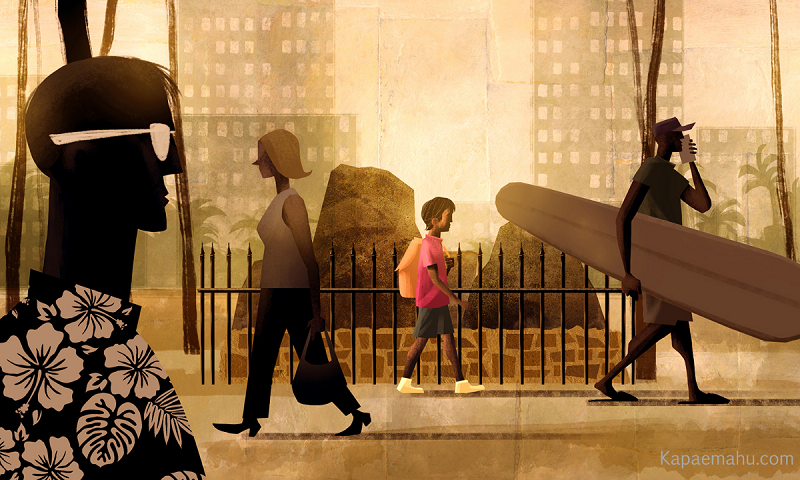
Why do people seek to dominate, exploit, and harm others? Wouldn’t the world be a better place if the talents and gifts of all people were accepted and honored rather than judged, condemned, and then erased?,” concluded the director.
We hope that the healing powers of Kapaemahu be eternal and all encompassing!
